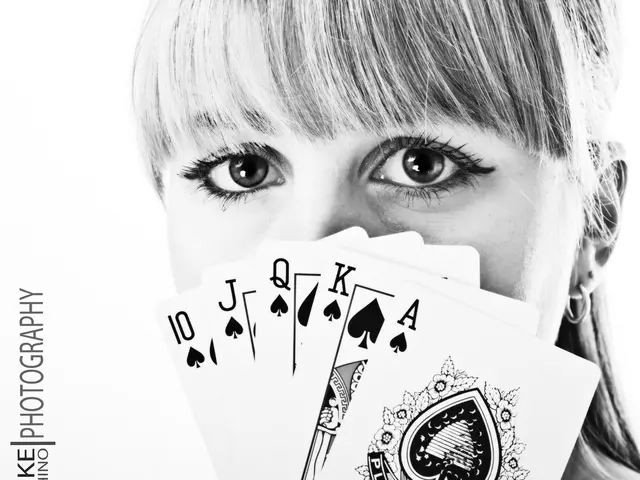Dysfunctional Bonding Pattern: An Explanation
Disorganized Attachment: Unraveling the Mystery in Relationships
Let's talk about disorganized attachment, one of life's tricky puzzles that presents itself in our romantic relationships. In this guide, we'll take a closer look at disorganized attachment, its telltale signs, and how it affects the partners involved. Buckle up, because it's time to dive into the world of disorganized attachment.
First things first, what is disorganized attachment, exactly?
Simply put, disorganized attachment is an unstable attachment style that emerges from troubled experiences with primary caregivers during childhood. It's a mix of anxious attachment and avoidant attachment, characterized by high levels of insecurity, unpredictable behaviors, and internal confusion.
Being subject to trauma, neglect, or a parent with unresolved trauma can shape the development of a person's attachment style. These unstable patterns then manifest themselves in adult romantic relationships. So, now that we have a rough idea of what it is, let's delve deeper into the strange world of disorganized attachment.
What Does Disorganized Attachment FEEL Like?
When a person has disorganized attachment, they experience immense, sometimes unmanageable emotions. They're drawn to love yet terrified of it, exhibiting extreme highs and lows that leave them feeling unsure of what a steady ground looks like.
For example, a disorganized partner might perceive their partner as a source of safety one moment, only to see them as a villain the next. They fluctuate between wanting closeness and pushing it away, creating a roller coaster of emotions in their relationships.
Disorganized attachments are often dubbed "Spice of Lifers" because they offer a contrasting perspective in life, a spark that forces growth and expansion, even if it comes along with immense pain.
The Disorganized Attachment Roller Coaster in Adults
Let's take the example of a woman named Sandy. After a string of single years, Sandy met someone special. They initially got along splendidly, but the relationship didn't last.
Sandy had a fear of being rejected and abandoned, as well as a terror of being overcontrolled and invaded. As the relationship deepened, her jealousy took over, and she started to distrust and doubt her partner. She chased after him, testing the limits of his affection only to push him away. Their relationship ended, and Sandy eventually regretted her decision, lamenting ground she felt she had lost.
Why Do Those With Disorganized Attachment Act the Way They Do?
Now we'll delve into the science behind disorganized attachment. Disorganized attachment can be linked to the shutting down of the dorsal vagal nerve, as supported by polyvagal theory. In regular circumstances, the dorsal vagus nerve serves a positive function, helping the body alternate between stimulated and relaxed states.
However, when people with disorganized attachment feel intense emotions, their attachment system deems the relationship a threat, unable to withstand the stimulation any longer. The emotions just switch off. That's why disorganized partners tend to abruptly end relationships and then resurface later, not a place of manipulation, but a confusing state.
How Can You Tell if You Have Disorganized Attachment?
Are you prone to fear of abandonment, mood swings, or judging others harshly? Do you have a deep understanding of the anti-hero or resonate with music and poetry? If so, you might have disorganized attachment. Here are some other signs:
- You feel a deep hunger to feel seen and heard but feel like you don't fit in anywhere.
- You hear people say you're "too intense" or "moody".
- You can be very persuasive and capable in your work.
- You empathize with others and people are drawn to you for it.
Enrichment Insights: Healing Disorganized Attachment
If you'd like to work on healing your disorganized attachment, here are some strategies to consider:
- Embrace and express your needs: Recognize and communicate your emotional and relational needs effectively.
- Practice mindfulness and self-reflection: Improve emotional awareness and develop better understanding of your attachment patterns.
- Emotional labeling and regulation: Identify and manage your emotions to improve emotional regulation.
- Effective communication and empathy: Engage in active listening, emotional validation, and effective conflict resolution.
- Professional support: Seek therapy to process past traumas and learn new ways of connecting with others.
- Supportive relationships: Engage in supportive friendships or therapeutic relationships for corrective relationship experiences.
- Journaling and self-reflection: Understand attachment patterns and wounds through journaling and self-reflection.
- Bottom-up self-regulation: Recognize and manage your physiological responses to stress or emotional triggers.
With these methods, individuals can work towards healing disorganized attachment patterns and developing healthier, more fulfilling relationships.
As you continue on this journey of understanding disorganized attachment, remember to have compassion for yourself and others. The road to healing may be long, but the rewards are well worth the effort.
Disorganized attachment, a complex puzzle in romantic relationships, stems from unstable experiences with primary caregivers during childhood. People with this attachment style experience intense, unmanageable emotions, oscillating between love and fear, creating a roller coaster of feelings in their relationships.
For instance, a woman named Sandy, subject to disorganized attachment, experienced fear of rejection and abandonment, followed by distrust and doubt in her significant other, leading to relationship breakdowns.
Disorganized attachment can be linked to the shutting down of the dorsal vagal nerve, as proposed by the polyvagal theory. When intense emotions emerge, the relationship is perceived as a threat, causing the emotions to abruptly switch off.
If you resonate with fear of abandonment, mood swings, or judging others harshly, you might have disorganized attachment. To heal disorganized attachment, strategies such as embracing and expressing needs, practicing mindfulness, emotional labeling and regulation, effective communication, professional support, engaging in supportive relationships, and journaling can be implemented.
As you navigate this journey towards understanding and healing, compassion for oneself and others is key. The path to healing may be long, but the rewards - healthier, more fulfilling relationships - make the effort worthwhile. Enhancing your lifestyle through health-and-wellness practices and prioritizing mental health can also aid in this healing process. In the realm of relationships, art can serve as a medium for self-expression and connection, helping to unravel the mystery of disorganized attachment.








